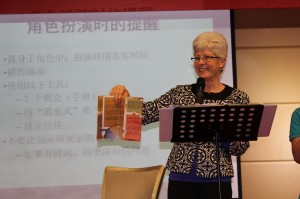Courts compel people into arbitration by enforcing arbitration clauses in contracts. Parties to the contract may argue that they didn’t know about the clause, or that circumstances have changed, but typically a contract provision calling for arbitration will be enforced. Even if the validity of the contract itself is in dispute, courts reason that parties voluntarily chose arbitration as the means by which they would resolve any disputes (Prima Paint Corp v Flood & Conklin Mfg Co, 388 US 395, 87 S Ct 1801, 18 L Ed2d 1270 (1967)).
But if the arbitration clause is in a will or trust, it’s viewed differently. This question arises when the person making out the will, or setting up the trust, specifies that anyone who disputes any provision of the will or trust must resolve their dispute in arbitration, rather than in court. The beneficiary has not agreed to arbitration in the contractual sense, so U.S. courts are divided as to whether parties to an estate dispute can be ordered into arbitration pursuant to a provision in a will or trust. Schoneberger v Oelze, 96 P3d 1078 (Ariz, 2004) cf. Rachal v Reitz, 347 SW3d 305 (Texas Sup Ct, 2011).
For Christians, the issue should be moot. The Christian Scriptures forbid Christians from suing one another in the civil courts, and enjoin them instead to resolve their differences within the church (I Corinthians 6:1-7). So, whether or not the will or trust includes an arbitration clause, believers who stand to benefit from it should choose Christian mediation and/or arbitration.
So can a Christian testator/settlor require that any disputes among the beneficiaries must be settled in Christian arbitration? If the disputing beneficiaries are all believers, the arbitration clause would reinforce the biblical command, removing all temptation to battle this out in court. Both legally and spiritually, the beneficiaries are compelled to arbitration. But if one of those beneficiaries is not a believer, should she still be compelled to participate in Christian arbitration?
These questions are before a court of appeal in California just now (McArthur v. McArthur, CA 1st District Court of Appeal No. A137133). Shortly before she died, Mother amended her trust to leave the bulk of her estate to one of her three daughters, and to mandate Christian arbitration if there were any disputes among her daughters. Another daughter is challenging both the amendment and the arbitration clause. She’s not objecting to the fact that it is Christian arbitration, but rather to the notion that she should be compelled to participate in arbitration when she never agreed to that process.
Personally, I don’t have a problem with compelling potential beneficiaries to resolve their estate disputes in arbitration. I agree with the reasoning of the court in Rachal v Reitz, supra, that the assets from a trust are a gift, and the donor can condition it on participating in arbitration and staying out of court. And I definitely endorse compelling Christian disputants to resolve their disputes within the church rather than in court. But the idea of forcing an unbelieving party into Christian arbitration against their will makes me uneasy. God loves justice, and it doesn’t feel just—even though the process itself is likely to be as just as any court proceeding, if not more. Does the daughter feel like Mother is reaching out from the grave to try one last time to shove the gospel down her throat? Even though God can work in that situation, it doesn’t feel like the way of Christ.
Rather than forcing people into Christian arbitration, I like the way that Peacemaker Ministries encourages it without requiring it, by suggesting the following language for a will:
I believe that God wants Christians to make every effort to live at peace and to resolve disputes with one another in private or within the church. I believe that obedience to these principles honors and pleases God, benefits those involved, and may lead others to faith in Christ. Therefore, trusting that my family and friends will honor my beliefs and wishes, I ask that any questions or disputes that may arise during the administration of my estate be settled by mediation and, if necessary, arbitration, in accordance with the Rules of Procedure for Christian Conciliation of Peacemaker Ministries.

